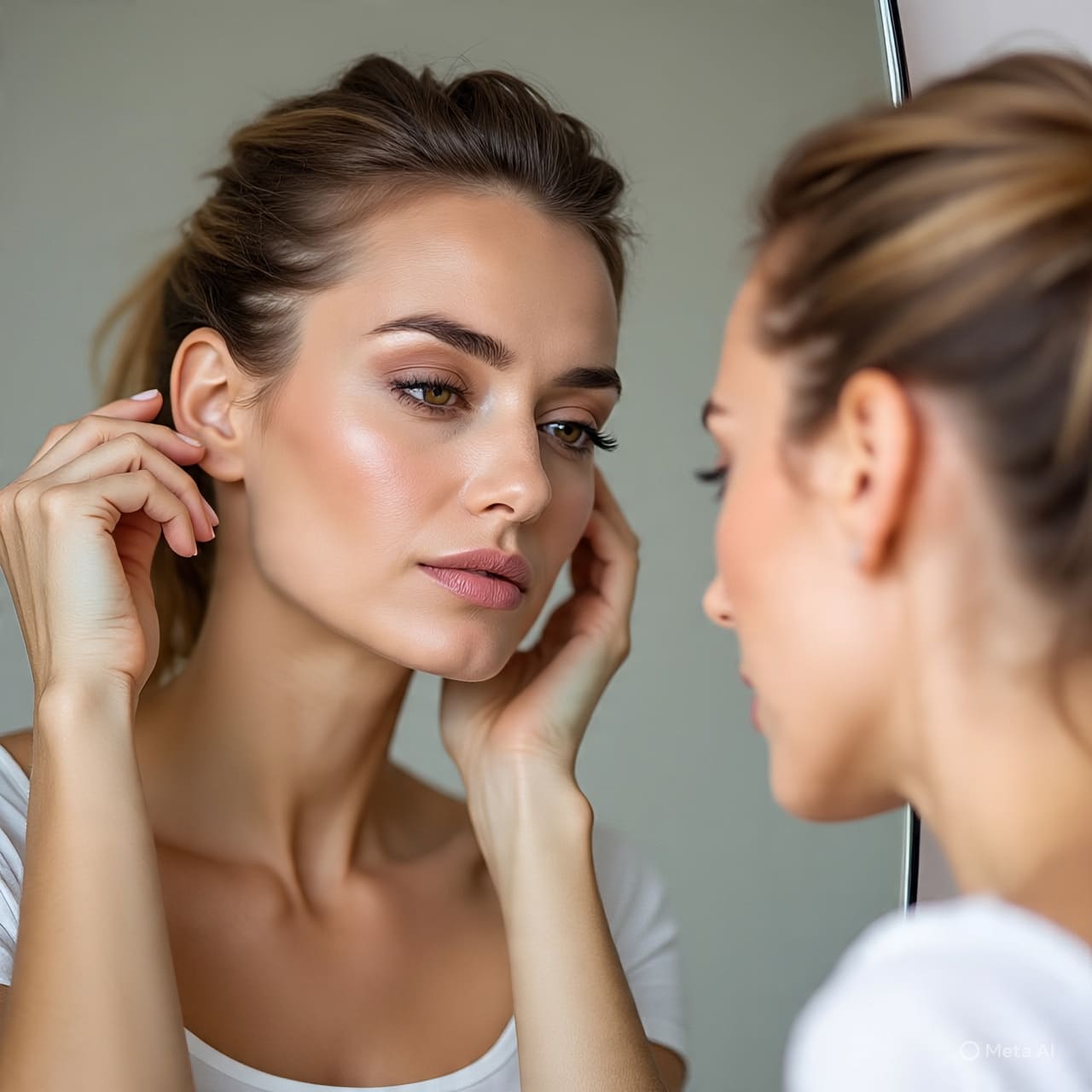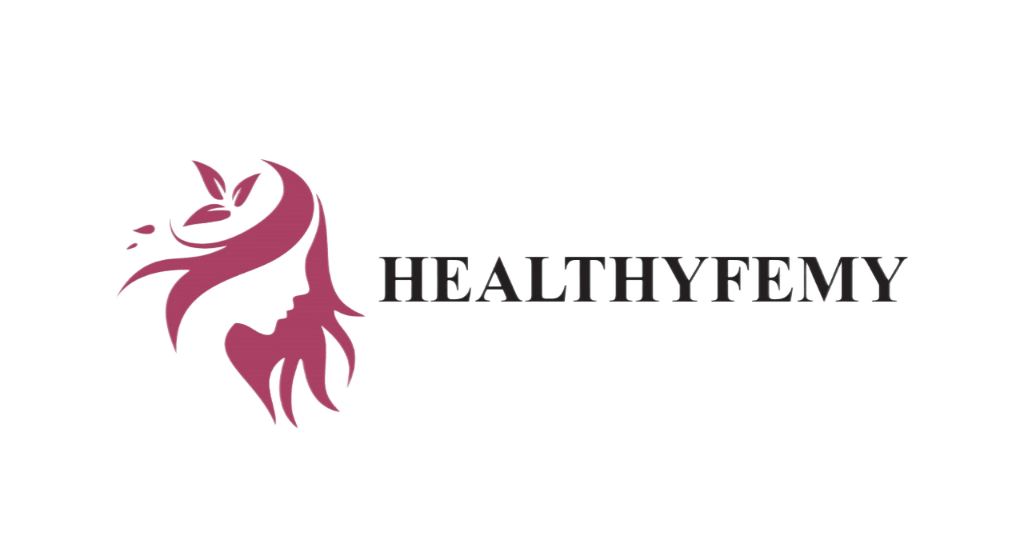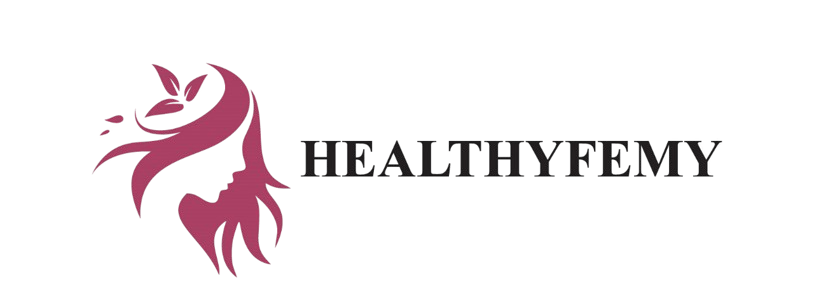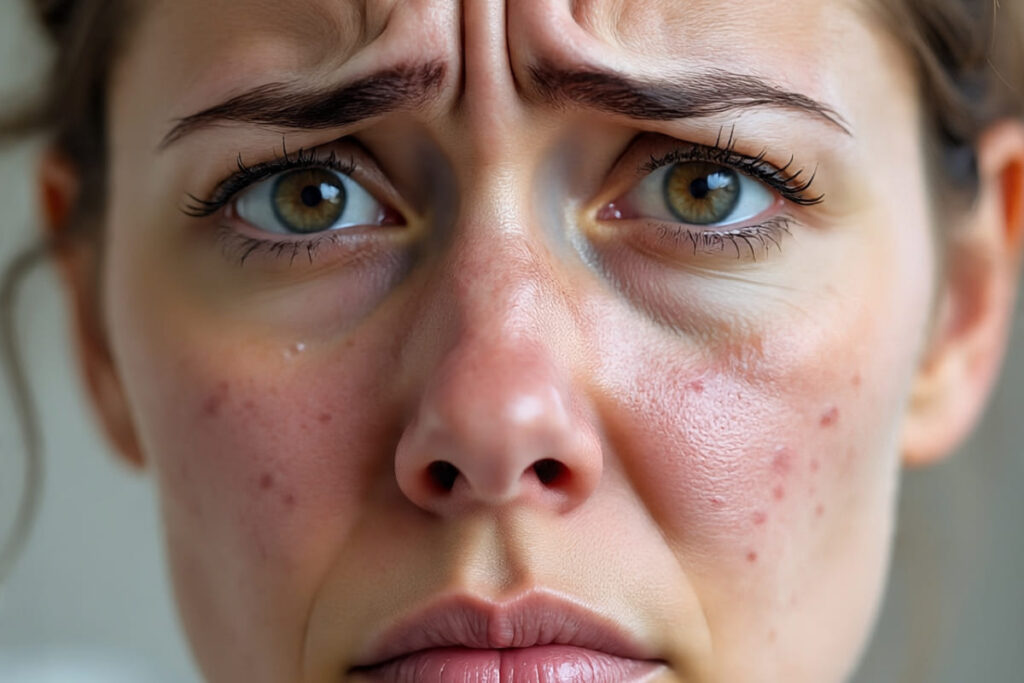Let’s discuss PCOS-related hair and skin problems, which are frequently dismissed or dismissed with the casual “it’s just hormones” defense. Have you ever wondered why your hair is thinning like this when you look in the mirror? If you’ve tried every serum on the market and given up dairy because your adult acne still won’t go away, you’re not alone.
A complicated hormonal disorder called polycystic ovary syndrome (PCOS) can make your skin and hair a battlefield. The problem is that both the difficulties and the answers are genuine. All you need to do is know where to look and what is truly worthwhile.
Let’s take a closer look at how PCOS impacts your skin and hair, as well as what you can do to take some of the stress out of your life.
The Hormonal Hurricane That Underlies It
All PCOS is frequently referred to as a hormone imbalance, but that is only a partial description. The interaction and misbehavior of those hormones is where the actual trouble resides.
At the heart of it? Androgens.
These are often labeled “male hormones,” but all bodies make them to some degree. In PCOS, though, the ovaries pump out too much. High levels of androgens—especially testosterone—can mess with hair follicles and oil production in ways that are anything but subtle.
Hair Loss, but Not the Regular Kind
The kind of hair loss that shows up with PCOS isn’t your classic shedding from stress or poor nutrition. This one has a name: androgenic alopecia. It’s a mouthful, sure, but what it means is this—your hair follicles are shrinking. Slowly, over time. And once that miniaturization happens, it’s hard to reverse.
Here’s what you might notice:
- Hair thinning at the crown or part line
- More scalp showing in photos or under bright lights
- Ponytail suddenly feeling… thinner
It’s not dramatic clumps falling out in the shower (though that happens, too). It’s more of a sneaky, slow fade that chips away at your confidence bit by bit.
And it doesn’t help that many doctors dismiss it with “it’s normal.” It isn’t—at least not like this.
The Skin Side of Things: Acne, Oil, and Other Surprises
If you’ve ever been told that acne is only a teen problem, raise your hand.
Yes, exactly.
Hormonal acne in PCOS can be severe, inflammatory, and obstinate; it can appear on the chin, cheeks, jawline, and occasionally even the back. Furthermore, these are not your typical whiteheads. We’re talking painful cystic spots that hang around for weeks, leaving scars that overstayed their welcome.
Other skin-related symptoms can include:
- Oily skin: Thanks to excess sebum production driven by androgens
- Dark areas (acanthosis nigricans): frequently found in the groin, armpits, or neck
- Skin tags are harmless, tiny growths that show up in folds. It goes beyond vanity.
Both your physical and mental sense of self-worth may be impacted by these changes.
So, what causes this to occur?
Let’s break it down.
1. Androgen Overload
As mentioned earlier, testosterone and its cousins go into overdrive in PCOS. These hormones shrink hair follicles on your scalp but do the opposite elsewhere—cue the facial hair (a whole other topic). Additionally, they cause an increase in oil production, which clogs pores and causes breakouts.
2. Resistance to Insulin
A significant proportion of women with PCOS have insulin resistance. Insulin levels rise as a result of your body having to work harder to metabolize sugar. An unpleasant feedback loop might result from high insulin stimulating the ovaries to produce more androgen. It also encourages dark spots and thicker skin.
3. Prolonged Inflammation
Numerous PCOS patients have mild discomfort. That brewing internal conflict has the potential to weaken your skin’s defenses, cause breakouts of acne, and even cause hair loss over time.
Reaching the Resolutions (At Last)
No, there isn’t a solution that works for everyone. However, that does not imply that you are helpless. Let’s divide the solutions into two categories: lifestyle-based and medical. You might find that a combo of both works best.
🔹 Health Care Choices You Should Discuss With Your Physician
1. Spironolactone
By blocking androgen receptors, this drug helps your body avoid reacting to excess testosterone in the blood. It is frequently recommended for female-pattern hair loss and hormonal acne. Although it doesn’t work right away, it can provide visible effects over a few months.
Avoid it if you’re attempting to conceive because it’s not safe to use while pregnant.
2. Pills for birth control
Although they don’t “cure” PCOS, they can control hormones and lower androgen levels, which will result in better skin and less hair loss. They’re particularly helpful if you don’t intend to become pregnant anytime soon.
3. Topical Rogaine (Minoxidil)
The FDA has authorized this for female pattern hair loss. It doesn’t treat the root hormonal cause but can help stimulate hair regrowth. It takes commitment—think 6 months of consistent use before results show up.
4. Retinoids & Antibiotics (for Acne)
These can help manage breakouts but won’t touch the hormonal side. Consider them more of a Band-Aid than a long-term fix—useful, but not the whole story.
🔹 Lifestyle Adjustments That Truly Have an Impact
1. Tame the Insulin Beast
Even modest improvements in blood sugar control can calm androgens down.
- Put an emphasis on fiber, protein, and complete meals.
- Reduce your intake of processed carbs and added sugars.
- Don’t fear fat (avocados, nuts, olive oil are your friends)
- Move your body regularly—walking, strength training, yoga, whatever you enjoy
2. Stress Management
We know it’s easier said than done. However, long-term stress exacerbates hormonal instability and inflammation.
Try:
- Deep breathing
- Journaling
- Saying “no” more often
- Prioritizing sleep like it’s your job
3. Supplements
Although you should always consult your physician first, these have showed promise:
- Inositol: particularly myo-inositol, can lower testosterone levels and increase insulin sensitivity.
- Zinc: Has anti-inflammatory and acne-reducing qualities
- Omega-3s: Reduce inflammation and promote healthy skin
4. Non-Toxic Cosmetics
A lot is absorbed by your skin. Steer clear of harsh, stripping substances, especially if you already have a damaged skin barrier.
- Seek out: mild cleaners Niacinamide (decreases oil production and inflammation)
- Salicylic acid (sometimes used for blocked pores)
- Ceramides (to restore the barrier of the skin)
What About the Growth of New Hair?
It’s not a sprint; it’s a marathon. The onset of hair loss takes time, and reversing it takes much longer. Items that could be useful:
- Massages of the scalp using peppermint or rosemary oil (which promotes circulation)
- Low-level laser treatment (some people vouch for it)
- Supplements containing collagen and biotin (but only if you’re lacking—don’t overdo it) Keep in mind that if androgens are the primary cause of your hair loss, treating the hormones will be necessary for it to properly regrow.
The Emotional Aspect:
We Can’t Act Like This Is Only Physical In clinical discussions, this section is sometimes omitted, yet it is equally important. Loss of hair can be cruel. Skin problems might undermine your self-esteem. PCOS is a lived experience that influences how you present yourself in the world; it is not merely a group of symptoms. You may be ashamed. I’m frustrated. exhausted from attempting each unsuccessful “fix.” And it’s true. When your mirror doesn’t match your inner feelings, you have every right to be upset.
Don’t give up, though. Speaking a language that takes a little longer to interpret doesn’t mean your body is broken.
Last Word:
You Should Get Responses, Not Shrugs It’s the system, not you, if a doctor has ever advised you to “just lose weight” or given you birth control without providing further context. PCOS is complex. intricate. Furthermore, your problems with your skin and hair are a reflection of what’s going on inside of you, not just how you seem. Thus, continue to ask inquiries. Continue digging. Above all, never stop standing up for yourself. You have the right to be at ease with your physical appearance. You deserve assistance that goes beyond simple suggestions like “try a new shampoo” or “drink more water.” There are actual remedies. And the first step is to be taken seriously.
FAQs:
Yes, it’s very common. In fact, high levels of androgens (male hormones) can shrink hair follicles and trigger thinning or shedding.
Hormonal imbalance is the root cause. Because excess testosterone increases oil production, it often leads to acne, oily skin, or dark patches.
Yes, absolutely. Yes, many women experience both symptoms because of the same hormonal imbalance—particularly elevated androgens.
Typically, it’s androgenic alopecia or female-pattern hair loss. Although the hair may thin on the crown or temples, complete baldness is rare.
Yes, options like spearmint tea, zinc, and omega-3 supplements may help. However, results take time, and consistency is key.


